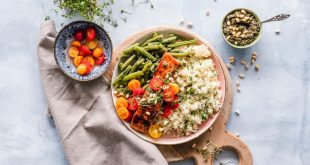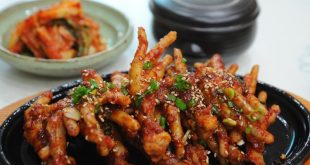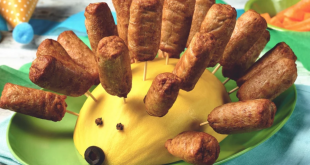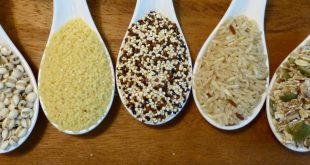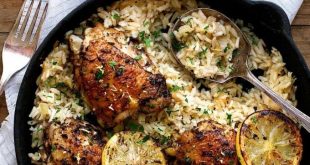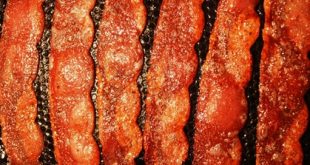
Introduction
Sure, a week-long road trip in your texas rv sounds fun. But what happens when your stomach starts rumbling, and you have to feed your constantly hungry passengers? You want to locate the nearest affordable restaurant for a good meal, but the menu is incredibly expensive, and you don’t have enough budget to do so.
Is it possible to cook a week’s worth of food in your RV, though? We’re here to show you that it’s more than possible. With proper planning and good budgeting tips, cooking food on a budget can be easier than you think. Here’s how you can cook food in your RV for an entire week!
Create A Meal Plan
Before you get too excited about finding recipes, we need to create a meal plan. Without a proper plan, it’s easy to lose track and stock up on excessive ingredients that you won’t be using –– or end up eating way too many hotdogs. Everyone’s RV trip is unique, so think about what kind of trip you want to take. If you want to spend your tip adventuring outside and use the RV for sleeping and eating, you might want to take more instant pot meals or easy-to-make recipes.
However, if you plan on relaxing by the campfire, you should plan for meals that can be cooked over a fire and use more elaborate recipes. Once you’ve planned out the type of trip you want, and the recipes you’ll require, you can begin planning your meals.
Think Up Storage Plans
One of the main challenges of cooking in an RV is the lack of space. With the lack of pantry space and small refrigerators, you need to start getting creative with your storage. We recommend purchasing dry goods such as cereal, pasta, beans, and rice in pantries and cabinets. Next, storing drinks in a separate cooler will help free up fridge space.
Another tip is to move any leftovers from cooking pots into Tupperware and store them in the freezer. Or, you could meal prep freezer meals from home and thaw them out when you’re hungry throughout the week.
Do A Grocery Run
After drawing up your meal plan, you now have a rough idea of what to purchase from the grocery store. Make a checklist of all the things you need for your week-long meal plan before heading out. After all, who enjoys running back and forth to get things you’ve missed? Constant grocery trips are sure to spoil the mood!
It’s always good to prepare your ingredients early –– you don’t want to run into situations where certain ingredients are unavailable, or the queue is too long. To help start you off, here are several grocery tips that you’ll need for each meal.
Breakfast Time
What To Buy
For breakfast, we recommend keeping it easy and simple; you don’t want to start the day with a food coma, or something too complicated to prepare! Groceries such as granola, oats, cereal, fresh fruit, and yogurt are great to make easy and refreshing breakfast meals.
Breakfast Recipes
If you’re craving something slightly fancier, you can try defrosting frozen cinnamon rolls over a cast iron pan or the coals of a Dutch oven. Otherwise, hearty breakfast scrambles of bacon, eggs, and potatoes can be easily assembled through a camp stove or over a fire. Do note that these recipes may require more preparation and cleaning up work, however!

Lunch Time
What To Buy
Daylight is precious, which is why people often spend little effort on lunch –– to fully maximize their vacation time. Lunch is also the perfect opportunity to finish off last night’s leftover dinners. If you’re a fan of using dinner leftovers, we recommend grilling last night’s dinner and throwing on some extra veggies and chicken breast to make a hearty lunch.
Otherwise, other great recipes include the classic peanut butter and jelly sandwich or picking up condiments and deli meat from your local sandwich station. Pre-cooked rotisserie chicken is often sold at grocery stores and can be eaten in a variety of ways –– either whole, shredded, or sliced –– and works with rice, salads, and soups.
You may also want to consider purchasing snacks for rainy days. Items such as granola bars, veggies and hummus, and even cheese and crackers make good fillers when you’re feeling hungry.
Lunch Recipes
Our all-time favorite is to make rotisserie chicken ranch wraps. You’ll need to mix shredded rotisserie chicken in a bowl with shredded cheese and ranch dressing, then spread the mixture on 8-inch tortillas. Top it off with your favorite veggie toppings, such as raw spinach, olives, and chopped tomatoes, and roll it up. This can be easily prepared the night before and eaten cold, or heated up over the campfire.
Another refreshing dish is making a watermelon salad. You’ll need to mix three cups of cubed watermelon with a peeled cucumber and topped with ½ cup of feta cheese. Separately, mix two tablespoons of red wine vinegar, one teaspoon of minced shallot, and ¼ cup of olive oil. Add the dressing to the salad and mix gently. To finish it off, add two tablespoons of fresh mint and a dash of salt to taste.
Dinner Time
What To Buy
When the sun sets, it’s time to get creative and sentimental with your dinner recipes. An old-school trade secret is to use the Instant Pot –– a device that lets you prepare meals without having to heat your RV. Plus, you’ll only need to clean one pot! Leftovers for tomorrow’s lunch are also common, but of course, depending on how many people you have in your group.
If you don’t have an Instant Pot, you can also prepare meals on a grill, over a campfire, or on your RV’s stovetop. Easy recipes such as stir fry, spaghetti, or tacos cook easily and don’t require too much heating. If you plan on doing more grilling, however, you’ll need to prepare the meat and seafood used. One quick tip is to use tinfoil to cook your meats; it’s fun for both adults and children and saves up on the cleaning tremendously!
Dinner Recipes
Our favorite recipe is making veggie and sausage campfire packets. You’ll need sheets of heavy-duty tinfoil. Chop up sausages and add them to a bowl with onions, mushrooms, and chopped zucchini. Toss the mixture with one tablespoon of your choice of seasoning salt and one tablespoon of olive oil. Divide your mix on the tinfoil sheets and fold them gently into packets. Next, cook them over the campfire for 20 minutes or until your food is completely cooked. Open the packets with care! The hot steam may burn you.
Conclusion
The trick to making successful RV food is to choose recipes that aren’t overly ambitious and won’t stress you out. The main point is to have fun and enjoy cooking with your loved ones!

 World inside pictures Collect and share the best ideas that make our life easier
World inside pictures Collect and share the best ideas that make our life easier
